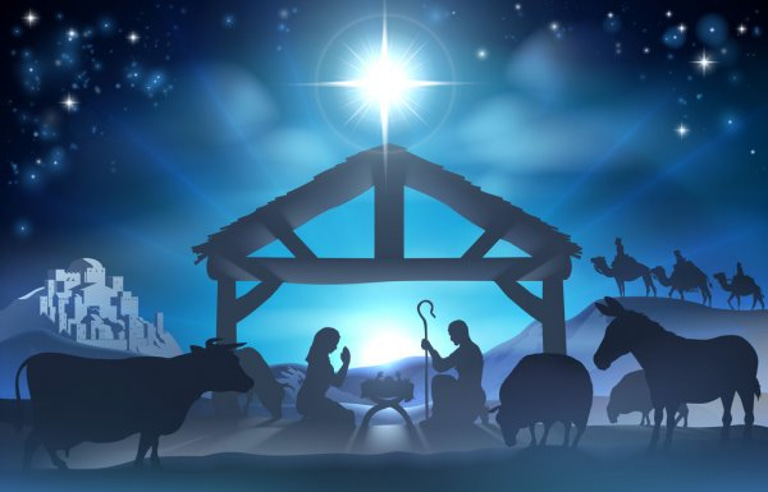Why People Are Curious About the Ages of the Wise Men?
How old were the Three Wise Men? Discover surprising facts, common myths, and what history and tradition say about their ages in the Nativity story.
Grace Callahan
1/13/202516 min read
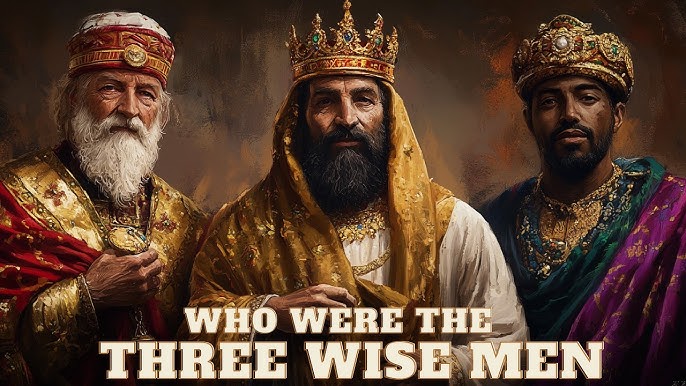

Introduction
The Three Wise Men—Melchior, Caspar, and Balthazar—play a key role in the Nativity story. Yet, many questions remain about these figures, particularly their ages. While images often show them as old men, the Bible provides little information on this topic. This article will explore the myths and legends surrounding the Wise Men's ages and reveal the historical context that shapes our understanding of their identities. Discover the truth behind these fascinating characters and the stories that have influenced how we see them today.
The Biblical Account and Its Silence on Age
One of the most curious aspects of the story of the Wise Men is the complete lack of direct references to their ages in the Bible. Unlike many biblical figures whose ages are carefully noted—whether it’s the long lives of patriarchs or the specific ages of Jesus' disciples—the Wise Men remain a mystery when it comes to their ages. So, what’s behind this silence? And how has this absence sparked so much speculation?
The Lack of Direct References to the Wise Men’s Ages in the Bible
Let’s be honest, the Bible is not exactly shy when it comes to detailing the lives of key figures. From the long genealogies to the specific ages of those like Noah or Moses, the biblical authors often take care to record such details. Yet, when it comes to the Magi, we get almost nothing about their physical attributes, including their ages. The Gospel of Matthew, which is our primary source for the story of the Wise Men, only briefly mentions them in Chapter 2. We learn that they were "wise men from the East" who followed a star to find Jesus, bringing gifts of gold, frankincense, and myrrh. But age? Not a word.
This lack of detail leaves room for endless interpretation. Some people might even see it as a missed opportunity—after all, with figures like the Magi, wouldn’t it be interesting to know their ages? But the truth is, the absence of age details might actually be telling us something: the focus of the story isn’t on their individual identities, but on the larger spiritual and symbolic significance of their visit.
The Role of the Gospel of Matthew in Shaping Their Story
Matthew's Gospel sets the tone for how we view the Wise Men. They aren’t named in the text (though later traditions would name them as Melchior, Gaspar, and Balthazar), and their role is purely to acknowledge the arrival of Jesus, the King of the Jews. This encounter wasn’t about their personal stories or backgrounds; it was about the recognition of divine prophecy. The Magi’s visit symbolized that Jesus’ birth was a momentous event for the entire world, not just for the Jewish people.
The Gospel doesn’t dwell on their lives or personal characteristics because it’s their actions, not their identities, that matter. The focus is on their journey, their recognition of the Christ child, and the gifts they brought. In a way, this omission invites us to project our own interpretations onto the story, allowing the Wise Men to become more symbolic than literal figures. And in that symbolism, their ages don’t matter as much as the message they carry.
How the Absence of Age Details Led to Speculation
With so little concrete information in the biblical account, it’s no surprise that people have filled in the gaps with all kinds of speculation. The absence of specific details about their ages has opened the door for traditions to paint them in various lights. Some early Christian writings, including apocryphal texts, proposed that the Wise Men were kings, with some even claiming they were young and others portraying them as elderly sages. Why not? Without age references in the Bible, there’s nothing to stop people from imagining them however they see fit.
Additionally, the speculation about their ages has often been shaped by the symbolic role they play. Some traditions suggest that the oldest Magi represents the past, the middle-aged one symbolizes the present, and the youngest embodies the future. This interpretation fits neatly with the Christian notion of Christ as the fulfillment of past prophecies, the present revelation, and the hope for the future salvation of humanity.
Personally, I find it fascinating how the silence on their ages lets people from different cultures and times project their own beliefs and expectations onto these figures. In some ways, the Wise Men’s ages become a canvas for the imagination, revealing as much about the societies that shape the myths around them as the figures themselves.
Ancient Interpretations and Legends about Their Ages
While the Bible itself remains silent about the ages of the Wise Men, early Christian traditions and later legends have been more than willing to fill in the gaps. Over the centuries, artists, theologians, and storytellers have woven their own interpretations of who these men were, and how their ages played into their symbolic roles in the Nativity narrative. What’s fascinating is how these interpretations reveal as much about the cultures that created them as about the Wise Men themselves.
How Early Christian Traditions Depicted the Ages of the Wise Men
In the early days of Christianity, the idea of the Magi as kings became firmly established, but so did the notion that they were not just men of wealth and power, but also of wisdom and experience. The concept of the "Three Kings" was especially appealing, as it reinforced the theological idea that Christ's birth was a universal event, acknowledged by all nations and peoples. But what better way to convey the importance of this event than by making the kings wise, mature, and full of life experience?
Early Christian traditions, particularly those from the Eastern Orthodox and later Medieval Christian worlds, often depicted the Wise Men as elderly sages. The Magi, in these depictions, weren’t spry, youthful adventurers—they were older men, perhaps even elderly, suggesting that wisdom grows with age. This portrayal was not merely a reflection of their assumed wisdom but also a way to show that people of all ages could recognize the divine truth of Christ’s birth. After all, the elderly were traditionally associated with wisdom, reverence, and respect in many ancient cultures, making the image of elderly kings more impactful.
The Concept of the “Three Kings” as Elderly Sages
The idea of the "Three Kings" has become a hallmark of Western nativity traditions, and it is intimately tied to the notion of the Magi as elderly sages. One of the most enduring legends around the Wise Men involves their age: they were often depicted as three men—one young, one middle-aged, and one elderly. This was a convenient and rich way to represent the passage of time, from youth to maturity to old age, symbolizing that Christ’s message was for all generations.
In some traditions, the elderly Magus is often portrayed as being reflective of the past and the wisdom of ages, while the middle-aged Magus brings the gift of understanding and present awareness, and the youngest represents the future, with the potential of Christ’s salvation extending far beyond any single generation. This triad of ages isn’t just an accident—it’s a visual metaphor for the timeless, all-encompassing nature of the Gospel.
Yet, while these visual representations were widespread, they also show how interpretations of the Wise Men were shaped by the needs and values of the time. Ancient Christian writers, artists, and theologians, all influenced by their own cultural contexts, eagerly imagined the Magi as elderly sages—men who had witnessed much, yet still sought the greatest wisdom of all. This made sense for societies that revered old age as a symbol of accumulated knowledge and insight.
The Role of Art and Literature in Shaping Perceptions
The depiction of the Wise Men as elderly was heavily influenced by the art and literature of the time. By the Middle Ages, the idea of the “Three Kings” as elderly, wise figures had become deeply embedded in European Christian art. The Magi were often shown wearing elaborate robes and crowns, with long, flowing beards and wise, contemplative expressions. These images were meant to convey not just their status as royalty, but also their venerability and sagacity.
Literature from this period reinforced this idea. Poetic and biblical texts would often describe the kings as wise beyond measure, as people who had seen the world and had enough life experience to understand the gravity of what they had discovered in Bethlehem. The importance of their journey, then, was seen not only in the fact that they came, but in the respect they commanded.
In some later medieval accounts, the Magi’s ages were explicitly detailed to convey their symbolism. These stories made it clear that the elderly Magus was the most experienced, the middle-aged one the most practical, and the youngest the most hopeful for the future. These literary interpretations echoed what was becoming a widespread visual tradition in Christian art, where each king would be depicted as an older, distinguished man.
Myths vs. Historical Facts: Unveiling the Truth
When it comes to the story of the Wise Men, separating myth from historical fact is a delicate task. Over centuries, layers of legend and cultural interpretation have built up around these figures, often obscuring the truth of their existence and roles in the Nativity story. So, what’s the real story behind these mysterious travelers? And how much of what we know today is shaped by myth rather than fact?
The Oldest Recorded Traditions of the Wise Men
The earliest accounts we have of the Wise Men come from the Gospel of Matthew, written in the first century. However, these brief mentions are scant on details, particularly regarding their identities and ages. The Gospel only refers to them as "Magi," a term that originally referred to Zoroastrian priests from Persia or other Eastern scholars known for their knowledge of astrology and the stars. This does little to explain who they were in the personal sense.
As for the first recorded traditions about the Wise Men, these mostly developed in the centuries following the Gospel's publication. By the second century, Christian writings began to add layers to the story. Some of the earliest Christian writers, like Clement of Alexandria, suggested that the Wise Men were kings, likely as a way to elevate their significance in the story of Jesus’ birth. The number three, which wasn’t actually specified in the Gospel, was later adopted due to the three gifts mentioned—gold, frankincense, and myrrh—thus giving birth to the popular image of "Three Kings."
In these earliest traditions, however, the Wise Men were still largely faceless and enigmatic figures. They were men of great learning and wisdom, but little else was known about them.
The Possible Cultural and Political Influences on Their Age Representation
Now, when we examine the development of the "elderly Wise Men" concept, it’s clear that it wasn’t just theological concerns that shaped their image—it was also cultural and political influences. In societies across the ancient world, older men were often associated with wisdom and authority, and as Christianity spread through the Roman Empire, these cultural values undoubtedly played a role in shaping how the Magi were depicted.
Medieval Europe, for example, held reverence for the elderly as carriers of wisdom and knowledge. This is why, in many Christian depictions, the Wise Men were presented as elderly sages—men who had spent years, even decades, gathering wisdom and experience. The idea of venerable kings or wise men visiting the newborn Christ fit well with the Christian desire to convey the universal importance of Christ’s birth, and aging figures were seen as more likely to recognize the divine truth of that event.
Furthermore, the idea of venerable kings or scholars may have been influenced by the political climate of the time. As Christianity gained traction within the Roman Empire and beyond, rulers and leaders might have wanted to present the Wise Men as elderly figures to emphasize the importance of authority and experience in recognizing Christ as the divine king. In doing so, they could mirror the political structures of their time, where age and experience were associated with leadership.
Historical Context: What Age Would Have Been Typical for Wise Men of the Time?
What might the "real" ages of the Magi have been, based on the historical and cultural context? The term "wise men" in ancient times referred to learned individuals—often astrologers, philosophers, or priests—who were deeply respected for their intellectual abilities. It’s important to remember that in the ancient world, the notion of aging and maturity differed quite a bit from how we think of it today. In many cultures, wisdom and respect came with age, but the lifespan was shorter than it is now.
A person’s "old age" in ancient times would have been much earlier than what we would consider old today. For instance, someone who lived to be in their 50s or 60s would have been considered elderly, with their wisdom earned through years of study and experience. Given the life expectancy at the time, it’s plausible that the Wise Men were older individuals, but probably not as elderly as they are often depicted in art.
The political and religious leaders who interacted with the Magi, such as King Herod, were often mature, experienced men in their 40s or 50s, so it wouldn’t be unreasonable to imagine the Magi as being in their 40s to 60s as well—though not necessarily the ancient, decrepit figures of later Christian art. Their wisdom, however, would have set them apart from the typical court advisors or scholars of the time.
Age and Symbolism: What the Wise Men Represent
The ages of the Wise Men may seem like a trivial detail, but they carry profound symbolic weight. In many ways, their depictions as elderly, middle-aged, and youthful men are not just arbitrary—each age group serves as a metaphor for key themes in the Nativity story. As we consider how the Wise Men’s ages reflect their roles and gifts, it becomes clear that the symbolism goes much deeper than we might initially think.
The Symbolic Importance of Age in the Depiction of the Wise Men
In Christian tradition, age is often associated with wisdom, experience, and spiritual depth. The idea of the Wise Men as elderly sages serves to underline this point. As men who had lived long lives and traveled great distances to honor Christ, they are seen as embodying the wisdom that comes with age. In contrast, the younger Magi—sometimes depicted as a fresh-faced youth—represent the hope and potential for the future, drawing a parallel to the baby Christ who represents new beginnings and salvation for all generations.
The middle-aged Magus, often portrayed as the most practical and experienced of the three, strikes a balance between youth and old age, representing the present moment and the wisdom gained through life’s journey. Together, these ages—youth, maturity, and age—create a complete narrative, emphasizing that the message of Christ’s birth is for all people, regardless of their stage in life. The idea that wisdom and reverence for Christ come from all stages of life is powerfully embodied by the varying ages of the Wise Men.
How the Wise Men’s Ages May Reflect Their Roles and Gifts
The gifts that the Wise Men bring—gold, frankincense, and myrrh—are each symbolic of different aspects of Christ’s life and mission. Gold represents Christ’s kingship, frankincense his divinity, and myrrh his future suffering and death. Could it be that the ages of the Magi reflect these symbolic gifts in some way?
The elderly Magus, bearing myrrh, could be seen as the one most attuned to the reality of suffering and mortality, given the proximity to death that often comes with old age. Myrrh, after all, was used in embalming and as a symbol of death. The middle-aged Magus, perhaps at the height of his life and accomplishments, could be offering frankincense, a gift fit for a divine figure. And the youngest, full of hope and promise, might be the one offering gold, as it symbolizes Christ’s kingship—something that, in the context of youth, may represent an ideal of power and potential yet to be realized.
These roles, though speculative, offer a rich tapestry of symbolism. The varying ages and their corresponding gifts help to paint a picture of the many facets of Christ’s identity and the wide range of people who came to honor him, from those who were seasoned by time to those whose future lay ahead of them.
The Ages of the Wise Men as a Metaphor for Wisdom, Wealth, and Spiritual Journey
When we think about the ages of the Wise Men, they also symbolize different stages in the spiritual journey that every believer takes. The elderly figure, who has seen much and has gained a great deal of wisdom through life’s trials, reflects the culmination of the spiritual journey—wisdom gained through experience, patience, and time. This Magus, perhaps, represents the completion of a journey of understanding that leads to the ultimate recognition of Christ as the Savior.
The middle-aged Magus, still vibrant and active, could represent those in the thick of their spiritual journey—still learning, still growing, still seeking. This is the stage where knowledge and wisdom begin to bear fruit, yet there is still much to learn. The youth, with all their potential and optimism, symbolizes the beginning of the journey—a time for exploration, discovery, and growth in faith. The young Magus might represent new believers or those just beginning to recognize Christ’s true nature.
In this sense, the three Magi serve as a metaphor for the complete spiritual journey of a Christian. They begin in youth, move through maturity, and end in the wisdom of old age, but all are united in their common purpose—to worship and honor the Christ child. Their ages are not just incidental; they are part of the grand narrative of the spiritual quest, representing different stages of life and faith.
Modern Views and Interpretations of the Wise Men’s Ages
In the realm of modern Nativity displays and artistic representations, the ages of the Wise Men remain a fascinating and fluid concept. While traditional depictions often adhere to the image of the elderly, middle-aged, and youthful sages, contemporary interpretations are more diverse. With each era reimagining the story, we find ourselves asking: How do these depictions of the Wise Men evolve in our time, and what cultural forces shape their portrayal? And perhaps more importantly, how do these modern views affect their role in the spiritual and visual landscape of today's Nativity celebrations?
How Contemporary Depictions of the Wise Men Continue to Vary
Modern depictions of the Wise Men are anything but uniform. In some contemporary renditions, the Magi may still be portrayed as the classic trio—an elderly, a middle-aged, and a youthful figure—reflecting the traditional symbolism of age as wisdom, strength, and youthful hope. However, more recent artistic and cultural expressions push boundaries, offering a range of depictions that include people of various ethnicities, ages, and even genders. These interpretations are often informed by a desire to make the story of the Wise Men more inclusive and representative of a global, modern audience.
Some artists may choose to depict all the Magi as youthful, embodying the idea that wisdom can come from anyone, regardless of age. Others opt for a more androgynous or gender-neutral portrayal of the figures, acknowledging that the story transcends gender and focuses on the shared spiritual journey. The emphasis shifts, not on age as a defining characteristic, but on the shared reverence and offering to Christ, suggesting that the Wise Men’s ages are less important than their willingness to seek out the divine.
While these contemporary interpretations may not be rooted in historical accuracy, they serve an important cultural function in making the Nativity story feel relevant and accessible to modern viewers. The portrayal of the Wise Men continues to be a reflection of the times, shaped by cultural sensibilities and evolving social values.
The Influence of Modern Culture on the Portrayal of the Wise Men
The way the Wise Men are depicted today is heavily influenced by broader shifts in modern culture, particularly the increasing desire for inclusivity and diversity. Today’s world is more connected, and we are more attuned to the need to recognize different backgrounds and experiences. This cultural shift is evident in the portrayal of the Wise Men, with many artists and Nativity display creators opting to represent them as figures who reflect the diversity of the global community.
For instance, in recent decades, many Nativity scenes have depicted the Wise Men not as representatives of a single, Westernized version of kingship, but as emissaries from different parts of the world—ranging from African, Asian, and Latin American backgrounds. This modern approach to their identities reflects an acknowledgment of the worldwide nature of the Christian faith and the global significance of Christ’s birth. It moves beyond the historical context of the Magi’s Persian origins, embracing a multicultural understanding that speaks to the universal nature of Christ’s message.
Moreover, the age of the Magi is sometimes downplayed in favor of focusing on their collective mission to honor the Christ child. In today’s interpretations, the Wise Men’s wisdom is less about age and more about spiritual insight, making their personal ages less critical. This is an interesting departure from traditional portrayals that linked their physical age to their level of wisdom or understanding of the divine.
How the Wise Men’s Ages Affect Their Role in Today’s Nativity Displays
In modern Nativity displays, the ages of the Wise Men impact both the visual aesthetics and the theological interpretation of the scene. Traditional displays often position the elderly Magus near the manger, symbolizing the culmination of the spiritual journey, while the younger figure may be placed farther from the nativity scene, representing the potential for spiritual growth and the future. However, as we move into more modern interpretations, these distinctions are blurred, and the focus shifts from age-based symbolism to the message that all are welcome in the faith.
For contemporary Nativity scenes, the ages of the Wise Men often serve to highlight diversity and inclusivity, rather than the classic narrative of age-related wisdom. Whether they are depicted as older, younger, or ageless figures, the key message remains the same: The Wise Men’s journey was one of humility, devotion, and reverence for the divine. As modern Nativity displays increasingly highlight the unity of all people in the worship of Christ, the traditional roles associated with the different ages of the Magi become less rigid and more fluid.
In some cases, modern Nativity sets have eliminated the distinctions of age altogether, portraying the Magi as a group of equal standing, suggesting that wisdom and faith are not restricted by age, status, or experience. This shift might be seen as an effort to move away from hierarchical notions of who is "worthy" to honor Christ, and instead emphasizes the universal call to all people—young and old, wise and inexperienced—to come and see the Savior.
Conclusion
The ages of the Three Wise Men may remain unknown, but their legacy is clear. They embody wisdom, faith, and the importance of honoring the divine. Their story encourages us to reflect on our own journeys and the values we hold dear. As you think about the Wise Men, let their message inspire you to seek truth and share kindness. Embrace the lessons they teach, regardless of age.
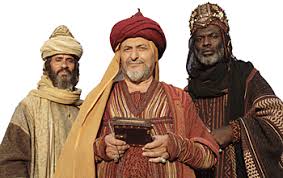

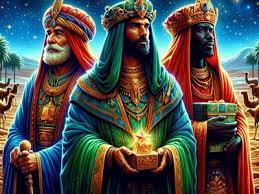

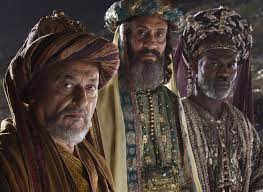

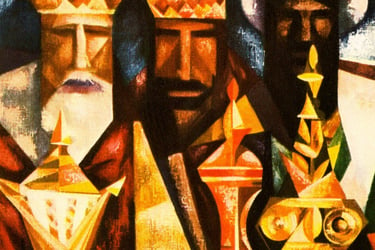

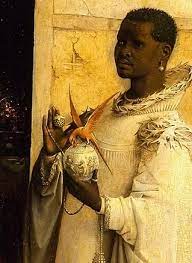





Balthazar
Gaspar
Melchior
